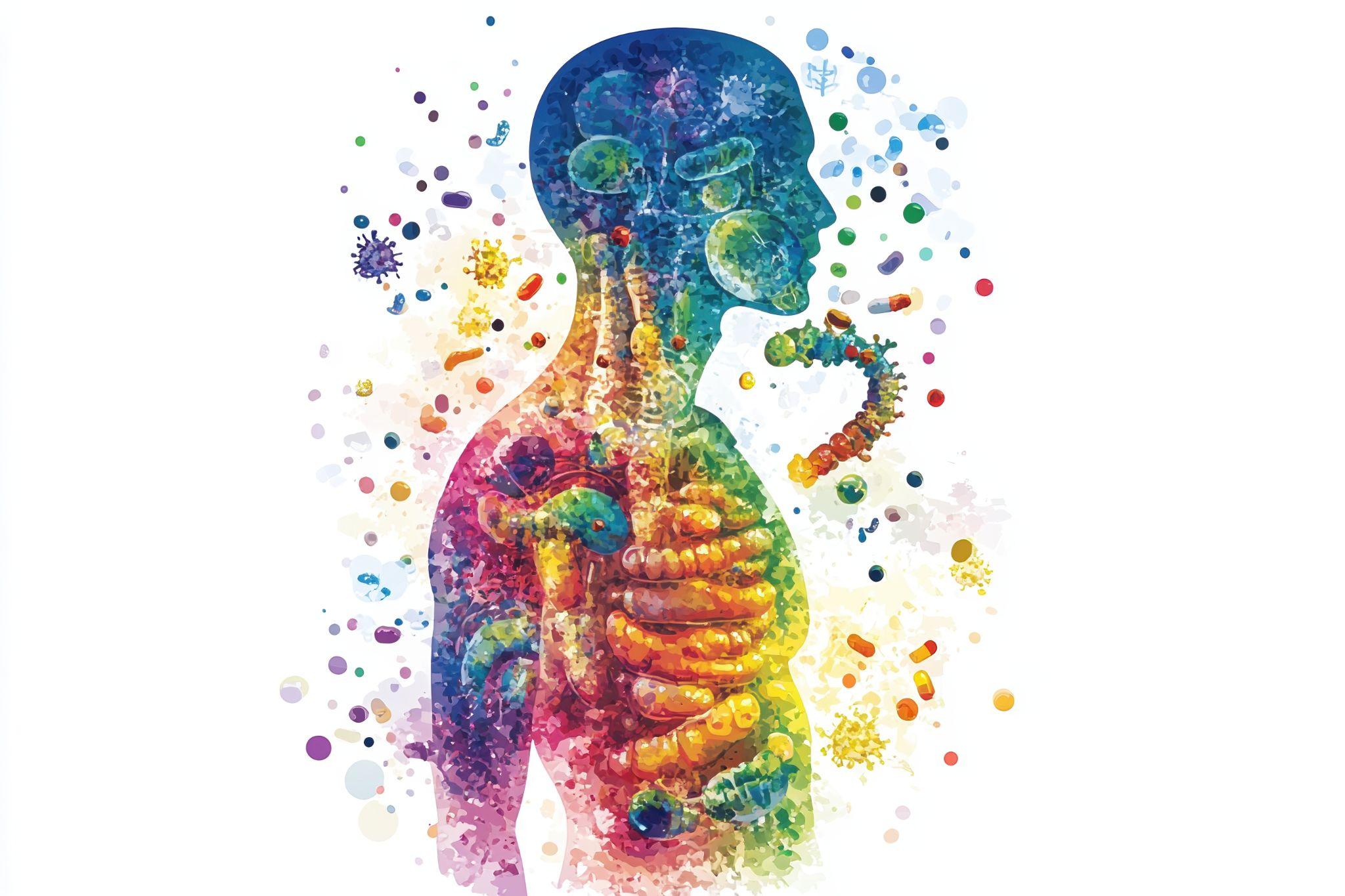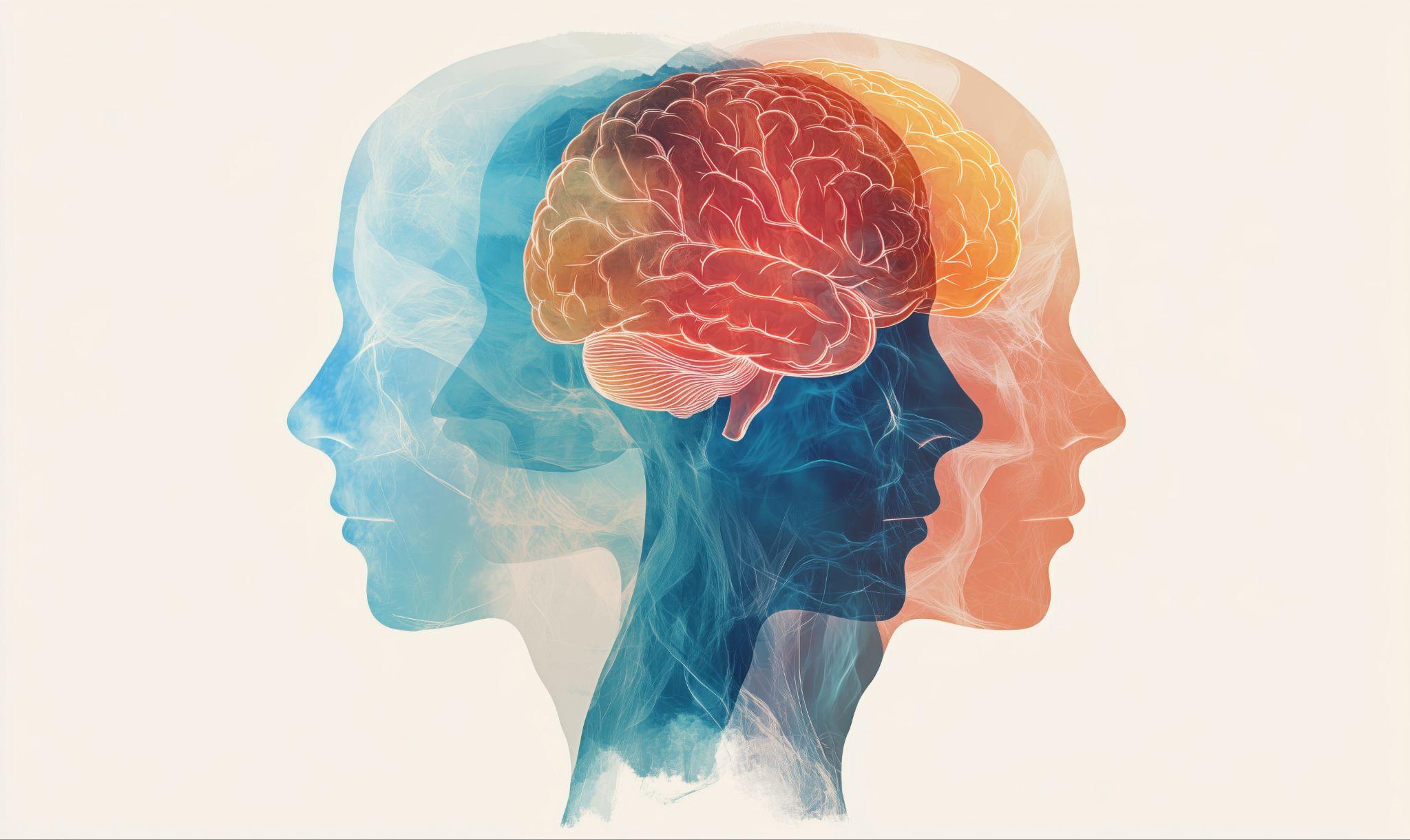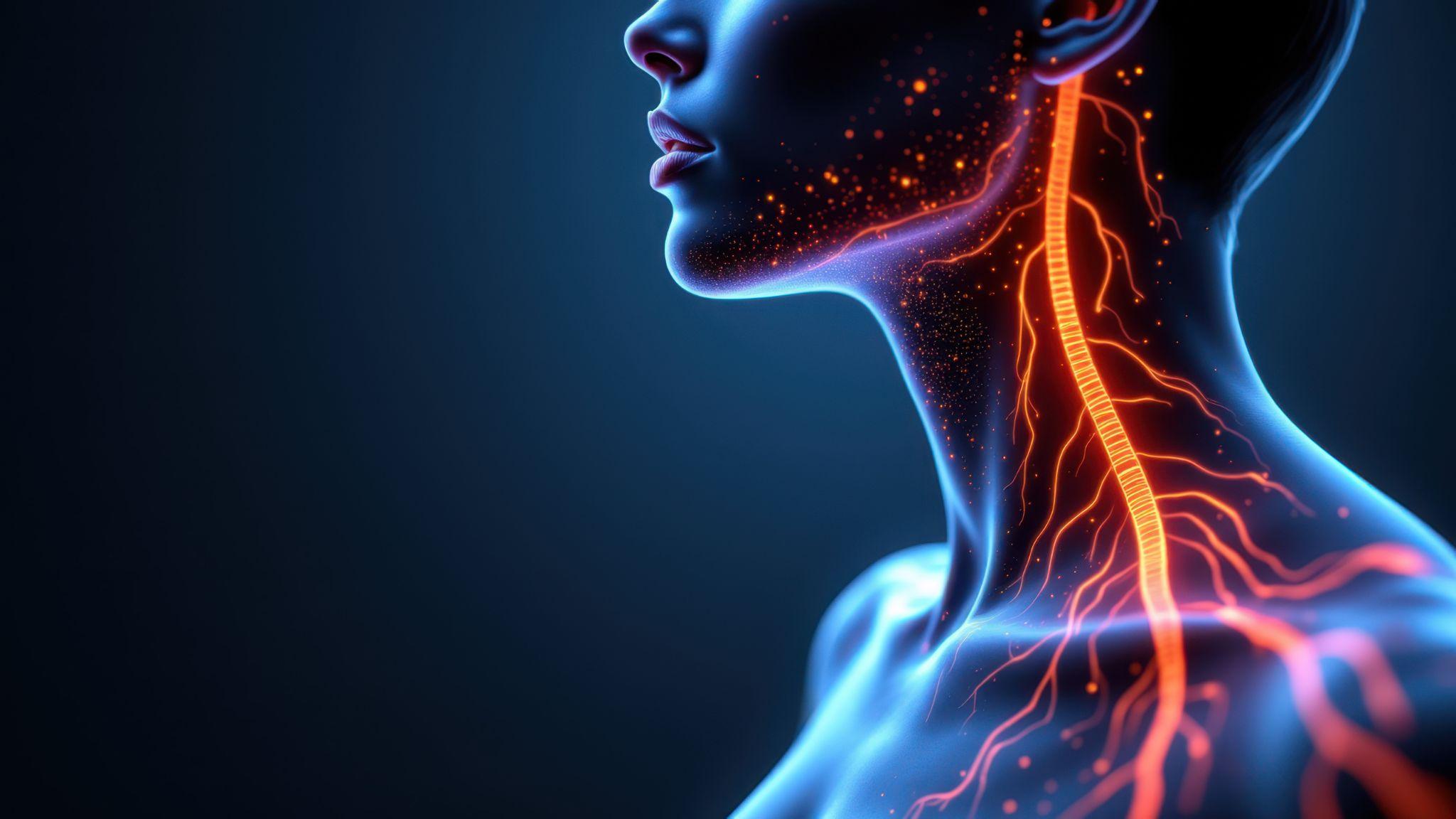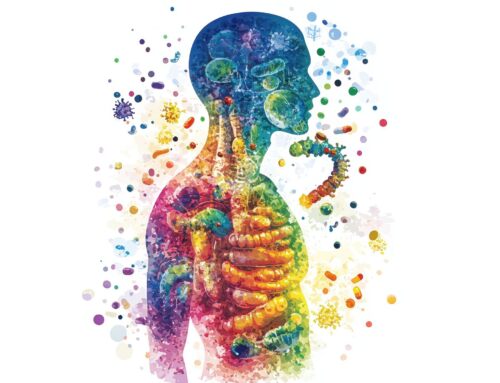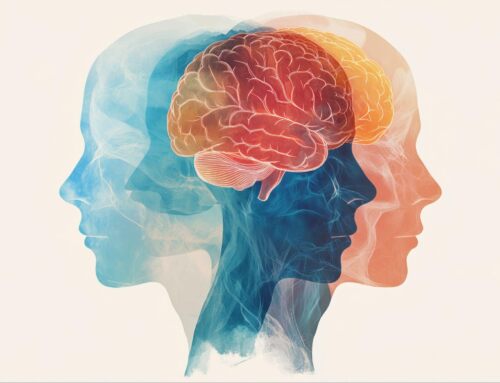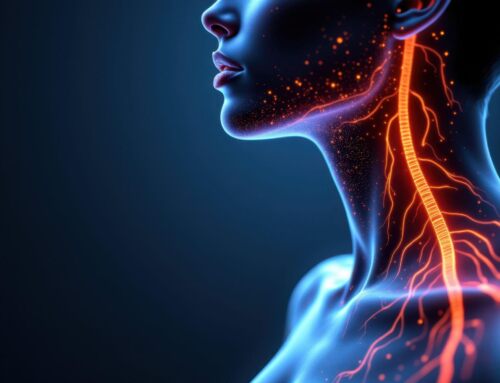Impact of Toxins on Hormones: Can Detoxification Strategies Balance Hormones?
The prevalence of toxins in our environment has increased exponentially within the last several decades. 85,000 synthetic chemicals have been identified in the environment, with at least 1,000 having endocrine disrupting properties (1). These may include persistent organic pollutants (POPs), metals, lead, mercury, bisphenol A (BPA), phthalates, pesticides, perfluorochemicals (PFCs), and polychlorinated biphenyls (PCBs), in addition to cleaning and personal care products (2-3). Increased toxin exposure has been shown to impede endocrine system function, disrupting hormonal balance, metabolism, and overall detoxification capacity.
Exposome & Toxic Load
The “exposome” refers to the sum of toxin exposure and their collective impact on the body’s physiology and overall functioning (4). Increased toxin exposure results in impeded endocrine functioning, as toxins bind to hormonal receptors, altering signaling and activity of enzymes involved in these processes. Exposure to toxins affects hormonal signaling, leading to alterations in metabolism. Increased prevalence rates of metabolic health conditions parallel the surge in toxin exposure. Toxin accumulation compromises efficient means of detoxification, further driving hormonal and metabolic alterations, and creating a vicious cycle of adverse health effects.
Induced Hormonal & Metabolic Alterations
When toxins and hormones are not able to be excreted from the body efficiently, they are recirculated throughout the bloodstream. This contributes to oxidative stress, hormonal imbalance, weight gain, and compromised sleep, mood, and libido. Low levels of testosterone and progesterone have been exhibited, as well as estrogen dominance (5).
Toxins interfere with the body’s hormone receptors and adipose tissue, disrupting signaling pathways and thereby impeding metabolic and homeostatic functions. Androgen deficiency, such as low testosterone, has been well evidenced among men with increased toxin exposure (6). Alterations in women’s hormones are also evident, including reductions in progesterone and testosterone, and estrogen dominance is often seen (7). This is, in part, due to the fact that excess estrogen is not able to be excreted from the body. Toxins, including BPA and phthalates, have been found to mimic the effects of estrogen, further impeding endocrine functioning.
Exposure to toxins has been demonstrated to induce alterations in lipid and body metabolism, contributing to oxidative stress, inflammation, hormonal imbalance, insulin resistance, and weight gain. Largely, this is suggested to be the result of alterations induced in hormonal signaling, coupled with the body’s compromised ability to appropriately detox, leading to more build-up and burden in the system. This also increases the likelihood that toxins will be stored in adipose tissue, as they are not excreted properly from the body and therefore are likely to recirculate. BPA has also been suggested to contribute to insulin resistance by impacting glucose metabolism, increasing risk for metabolic health conditions that include obesity and Type 2 diabetes.
A number of chronic health conditions have been associated with increased exposure to toxins, including obesity and related metabolic disorders (8). Elevated levels of estrogen can result in weight gain and compromised metabolic health while contributing to conditions such as polycystic ovary syndrome (PCOS). Toxins further inhibit hormonal function, which can compound these issues.
A Syndemic
The intersection of these factors and their induced adverse health effects have been termed a “syndemic,” underscoring their significance in impeding health. Toxin accumulation disrupts endocrine and metabolic functions, as well as the body’s ability to efficiently detoxify, resulting in a vicious cycle. As emphasized, toxins can decrease testosterone levels in men, contributing to reduced muscle mass, increased body fat composition, low libido, and impeded metabolic health. Thyroid disruption also occurs as a number of toxins interfere with thyroid synthesis. The thyroid is imperative in modulating metabolism, as well as hormones. Compromised thyroid functioning thereby, can further impede metabolism, detoxification, and endocrine functioning – contributing to weight gain, fatigue, and low libido (9).
A 2023 study highlighted that patients with early onset Type 2 diabetes demonstrated inhibition of conversion from DHEA to testosterone, resulting in reduced testosterone levels (10). A bidirectional relationship between circulating testosterone and blood glucose levels have also been established in the literature. Reduced testosterone levels were found in men with early-onset Type 2 diabetes (T2DM). Hormonal balance and metabolic health are further compounded by toxic buildup in the system, leading to this syndemic.
Toxin exposure, without sufficient means of detoxification, can pose a number of threats to endocrine function and overall systemic balance. For example, gut microbiota modulates estrogen levels through the production of β-glucuronidase, an enzyme that deconjugates estrogens into their active forms (11). This process is compromised by dysbiosis, or lower microbial diversity which often accompanies increased toxic build-up in the system. The decrease in deconjugation results in alterations in circulating estrogen, which can further contribute to compromised metabolic and hormonal health, estrogen dominance, and increase the risk for cardiovascular disease (CVD). Researchers demonstrate a bidirectional relationship among toxin exposure, metabolism, hormonal levels, and gut microbiota in influencing the etiology of syndemic conditions (12).
The Role of Obesogens
As emphasized, toxins interfere with thyroid function and largely disrupt homeostatic processes related to metabolism. They have been shown to compromise lipid and blood sugar balance and induce inflammation and oxidative stress, contributing to obesity (13). Mounting research demonstrates the toxic effects these chemicals can have on the body and their role in impeding metabolic health—referring to them as “obesogens.” Increased toxic load has been shown to increase insulin resistance and the risk of Type 2 diabetes (14). Associations between exposure to these chemicals and metabolic syndrome have also been demonstrated. Through their induced microbiota alterations, toxins further compromise metabolic, hormonal, and detox health (15).
Genetic Variants/SNPs
Bioindividuality is a significant factor to consider in detoxification support, as we all have different levels of tolerance and sensitivity to toxins. Genetic variants in our biochemical makeup may exist, affecting the body’s ability to detox efficiently. Variations in genetic makeup can make some more sensitive to certain exposures than others. Therefore, variability largely exists relative to the effects of toxins on our health.
STRATEGIES TO DETOX AND REDUCE THE IMPACT OF TOXINS
Adequate Detoxification Protocols – While complete avoidance of exposure to toxins is difficult due to their prevalence, certain detoxification strategies can help mitigate their impact and support overall system balance. Lifestyle and dietary changes can improve detox capacity, as well as hormonal and metabolic health. Reducing toxin exposure has been shown to lower estrogen mimicry effects, while nutrition support can enhance the body’s natural detox pathways, helping to restore balance in the system. Detoxification protocols will vary depending on bio-individual differences, including age, health status, nutritional reserves, and toxic load, among other factors.
Microbiome Ecosystem Support – Modifications in microbiome composition have been evidenced by the effects of toxic exposure, including reduced microbial diversity, quality, balance, and reduced synthesis of neurotransmitters and hormones, further impacting balance (16). Disruptions of gut permeability have also been evidenced from increased toxin exposure. The gut microbiome modulates countless aspects of health, including metabolism, hormones, and efficient absorption, digestion, and detoxification. The microbiome has been referred to as “the second endocrine system,” underscoring these integral regulatory functions (17). Toxins have been shown to induce gut microbiota alterations, conferring susceptibility to obesity and other metabolic challenges. Therefore, addressing this ecosystem is imperative.
Chronic inflammation from increased metabolic and oxidative stress and impeded detoxification are also associated with toxic build-up in the system. The liver needs to be supported to filter out excess hormones, as well as other compromising substances from the body so it can work efficiently. Supporting the microbiome helps to reduce strain and toxic load on the liver. The microbiome also has impressive metabolizing capabilities that can support detoxification by promoting the biotransformation of toxins, modifying their biological effects on the body when adequately supported (18).
Nutrient Density for Balance & Detox – Nutrition is essential to support efficient detoxification and support the body’s homeostatic physiological functions. Consuming a diverse array of vegetables, rich in fiber and phytonutrients, as well as anti-inflammatory fats supports hormonal and metabolic health while promoting detoxification. Opting to eat organic, whole foods provides more nutrient density while reducing exposure to pesticides and other pollutants.
In addition to nutrient density, consuming foods rich in antioxidants is also imperative for supporting the body with detox and negating oxidative stress. Glutathione is the body’s major antioxidant with countless detoxifying functions. Sources of glutathione include dark leafy greens. Cruciferous vegetables, including brussel sprouts, cauliflower, and broccoli are also important as they support liver detoxification and thereby hormonal balance. These foods also support fiber intake, helping to bind and excrete toxins in the system – supporting the microbiome by reducing strain on the liver.
Depending on bio-individual factors, intermittent fasting (IF) may be recommended in supporting cellular, metabolic, and hormonal health (19). Overall, adhering to a personalized treatment protocol that takes into account one’s unique biochemical makeup, genetic variability, and environmental factors is paramount in reducing toxic exposure and supporting endocrine, metabolic, and regulatory functions. Consuming a balanced, nutrient-dense, organic, whole-food diet rich in antioxidants, fiber, and plant compounds is recommended to support detox, microbiome, metabolic health, and endocrine function (20).
Sufficient Hydration – Adequate hydration with filtered water is essential to detoxify the body of toxins, as well as improve metabolic and hormonal health. Sufficient water consumption is also necessary for adequate digestion and absorption of nutrients – all of which aid the detoxification process (21). Water also helps to filter out excess hormones, improving hormonal imbalance and toxic overload, and is also essential for kidney function, helping to flush out toxins.
Movement To Excrete Toxins – Regular movement supports the excretion of toxins from the body, as it induces blood flow in the system. Engaging in regular movement also promotes metabolic and hormonal health, further supporting the body with efficient detox. Sweating is also promoted through movement which helps to eliminate toxins through the skin. Resistance training may be particularly beneficial for those with hormonal and metabolic concerns. Yoga may also be noteworthy in reducing stress or tension in the body. Regular sauna use can also stimulate the body’s natural detoxification process (22), helping to rid it of harmful toxins that can otherwise impede hormonal balance and metabolic health.
Reduce Toxic Load – Reducing toxic exposure is imperative. Avoid using plastic containers and instead aim to use glass to reduce exposure to BPA and phthalates. Also be mindful of toxic household cleaning products, personal care items, and cosmetics to minimize exposure. Finally, being mindful of what you put into your body in terms of substances is significant, as these can further contribute to toxic load and impede hormonal and metabolic balance.
Circadian Rhythm for Improved Detox & Homeostasis – Sunlight is a powerful, natural tool to support the system with the detox of toxins while promoting hormonal and metabolic health. Exposure to sunlight in the morning supports healthy sleep cycles, reduces cortisol, and promotes detox and balance in the system, as supported by a growing body of research (23-24). Sleep is also significant for restoring the body’s systems and promoting detoxification. Circadian rhythm regulation has been shown to maintain lipid homeostasis, metabolism, and liver detox capacities while reducing inflammation.
Stress Management – Stress is an integral component when it comes to managing toxic load, hormonal and metabolic balance, and efficient detox protocols. Stress can further wreak havoc in the system, contributing to metabolic distress, and impeding hormonal balance (25). Chronic stress causes chronic activation of stress-response pathways, ultimately leading to induced metabolic and hormonal changes such as altered insulin sensitivity and even obesity.
Achieving Optimal Health
Our environment has certainly evolved over the years with developments in a vast array of synthetic chemicals that can compromise our health. Remaining vigilant regarding the connection between toxins from our environment and our biology is imperative in being proactive about our health, so we can not only co-exist with our environment, but thrive.
Join us for this thought-provoking 2-hour educational course delving into this imperative topic on June 18th from 5-7 pm with Jeff Bland, PhD, Carrie Jones, ND, and Peter Kozlowski, MD. Assessment of contributing factors to hormonal and metabolic imbalances will be covered, along with evidenced based tools for promoting biodetoxification. Clinicians will leave with valuable clinical insights into the advancements in treating the complexity of these interconnected conditions from an integrative and functional medicine perspective.
References:
- National Institute of Environmental Health Sciences. Your Environment. Your Health. March, 2024.
- Koppel N., Maini Rekdal V., Balskus E. P. (2017). Chemical transformation of xenobiotics by the human gut microbiota. Science 356 (6344), 1–11. 10.1126/science.aag2770
- Sutton P, Woodruff TJ, Perron J, Stotland N, Conry JA, Miller MD, Giudice LC. Toxic environmental chemicals: the role of reproductive health professionals in preventing harmful exposures. Am J Obstet Gynecol. 2012 Sep;207(3):164-73. doi: 10.1016/j.ajog.2012.01.034. Epub 2012 Mar 8. PMID: 22405527; PMCID: PMC4682569.
- Maitre, L., Bustamante, M., Hernández-Ferrer, C. et al. Multi-omics signatures of the human early life exposome. Nat Commun 13, 7024 (2022). https://doi.org/10.1038/s41467-022-34422-2
- Darbre PD. Endocrine Disruptors and Obesity. Curr Obes Rep. 2017 Mar;6(1):18-27. doi: 10.1007/s13679-017-0240-4. PMID: 28205155; PMCID: PMC5359373.
- Meeker JD, Ferguson KK. Urinary phthalate metabolites are associated with decreased serum testosterone in men, women, and children from NHANES 2011-2012. J Clin Endocrinol Metab. 2014 Nov;99(11):4346-52. doi: 10.1210/jc.2014-2555. Epub 2014 Aug 14. PMID: 25121464; PMCID: PMC4223430.
- Chiang C, Pacyga DC, Strakovsky RS, Smith RL, James-Todd T, Williams PL, Hauser R, Meling DD, Li Z, Flaws JA. Urinary phthalate metabolite concentrations and serum hormone levels in pre- and perimenopausal women from the Midlife Women’s Health Study. Environ Int. 2021 Nov;156:106633. doi: 10.1016/j.envint.2021.106633. Epub 2021 May 15. PMID: 34004451; PMCID: PMC8380691.
- Dagar M, Kumari P, Mirza AMW, Singh S, Ain NU, Munir Z, Javed T, Virk MFI, Javed S, Qizilbash FH, Kc A, Ekhator C, Bellegarde SB. The Hidden Threat: Endocrine Disruptors and Their Impact on Insulin Resistance. 2023 Oct 18;15(10):e47282. doi: 10.7759/cureus.47282. PMID: 38021644; PMCID: PMC10656111.
- Ferrari SM, Fallahi P, Antonelli A, Benvenga S. Environmental Issues in Thyroid Diseases. Front Endocrinol (Lausanne). 2017 Mar 20;8:50. doi: 10.3389/fendo.2017.00050. PMID: 28373861; PMCID: PMC5357628.
- Hu Y, Yuan L, Bao YJ, Wang Y, Cai TT, Ma JH, Ding B. Low Total Testosterone Levels in Men with Newly Diagnosed Early-Onset Type 2 Diabetes: A Cross-Sectional Study in China. J Diabetes Res. 2023 May 2;2023:2082940. doi: 10.1155/2023/2082940. PMID: 37181070; PMCID: PMC10169243.
- Baker JM, Al-Nakkash L, Herbst-Kralovetz MM. Estrogen-gut microbiome axis: Physiological and clinical implications. 2017 Sep;103:45-53. doi: 10.1016/j.maturitas.2017.06.025. Epub 2017 Jun 23. PMID: 28778332.
- Núñez-Sánchez M.Á., Jiménez-Méndez A., Suárez-Cortés M., Martínez-Sánchez M.A., Sánchez-Solís M., Blanco-Carnero J.E., Ruiz-Alcaraz A.J., Ramos-Molina B. Inherited Epigenetic Hallmarks of Childhood Obesity Derived from Prenatal Exposure to Obesogens. J. Environ. Res. Public Health. 2023;20:4711. doi: 10.3390/ijerph200647
- Di Ciaula A., Portincasa P. Fat, epigenome and pancreatic diseases. Interplay and common pathways from a toxic and obesogenic environment. J. Intern. Med. 2014;25:865–873. doi: 10.1016/j.ejim.2014.10.012. [PubMed] [CrossRef] [Google Scholar]
- Heindel J.J., Newbold R., Schug T.T. Endocrine disruptors and obesity. Rev. Endocrinol. 2015;11:653–661. doi: 10.1038/nrendo.2015.163.
- Pries LK, Moore TM, Visoki E, Sotelo I, Barzilay R, Guloksuz S. Estimating the Association Between Exposome and Psychosis as Well as General Psychopathology: Results From the ABCD Study. Biol Psychiatry Glob Open Sci. 2022 Jun 1;2(3):283-291. doi: 10.1016/j.bpsgos.2022.05.005. PMID: 36325038; PMCID: PMC9616253.
- Noor J, Chaudhry A, Batool S, Noor R, Fatima G. Exploring the Impact of the Gut Microbiome on Obesity and Weight Loss: A Review Article. Cureus. 2023 Jun 25;15(6):e40948. doi: 10.7759/cureus.40948. PMID: 37503494; PMCID: PMC10368799
- Marialetizia Rastelli, Patrice D Cani, Claude Knauf, The Gut Microbiome Influences Host Endocrine Functions, Endocrine Reviews, Volume 40, Issue 5, October 2019, Pages 1271–1284,
- Kim BH, Joo Y, Kim MS, Choe HK, Tong Q, Kwon O. Effects of Intermittent Fasting on the Circulating Levels and Circadian Rhythms of Hormones. Endocrinol Metab (Seoul). 2021 Aug;36(4):745-756. doi: 10.3803/EnM.2021.405. Epub 2021 Aug 27. PMID: 34474513; PMCID: PMC8419605.
- Crinnion WJ. Organic foods contain higher levels of certain nutrients, lower levels of pesticides, and may provide health benefits for the consumer. Altern Med Rev. 2010 Apr;15(1):4-12.
- Grant DM. Detoxification pathways in the liver. J Inherit Metab Dis. 1991;14(4):421-30. doi: 10.1007/BF01797915. PMID: 1749210.
- Sinturel F, Spaleniak W, Dibner C. Circadian rhythm of lipid metabolism. Biochem Soc Trans. 2022 Jun 30;50(3):1191-1204. doi: 10.1042/BST20210508. PMID: 35604112.
- Crinnion W. Components of practical clinical detox programs–sauna as a therapeutic tool. Altern Ther Health Med. 2007 Mar-Apr;13(2):S154-6. PMID: 17405694.
- Reinke H, Asher G. Circadian Clock Control of Liver Metabolic Functions. Gastroenterology. 2016 Mar;150(3):574-80. doi: 10.1053/j.gastro.2015.11.043. Epub 2015 Dec 2. PMID: 26657326.
- Leproult R, Van Cauter E. Role of sleep and sleep loss in hormonal release and metabolism. Endocr Dev. 2010;17:11-21. doi: 10.1159/000262524. Epub 2009 Nov 24. PMID: 19955752; PMCID: PMC3065172.
- Hotamisligil GS, Davis RJ. Cell Signaling and Stress Responses. Cold Spring Harb Perspect Biol. 2016 Oct 3;8(10):a006072. doi: 10.1101/cshperspect.a006072. PMID: 27698029; PMCID: PMC5046695.


